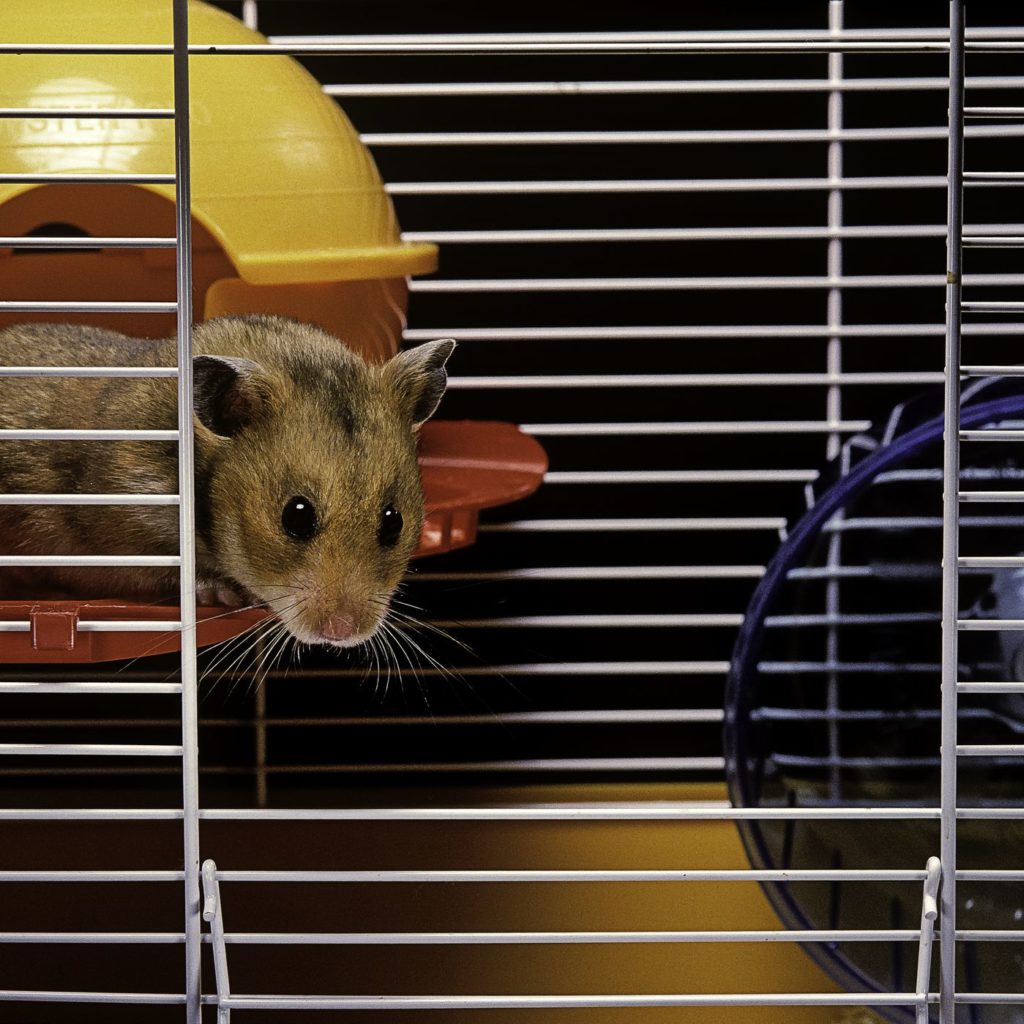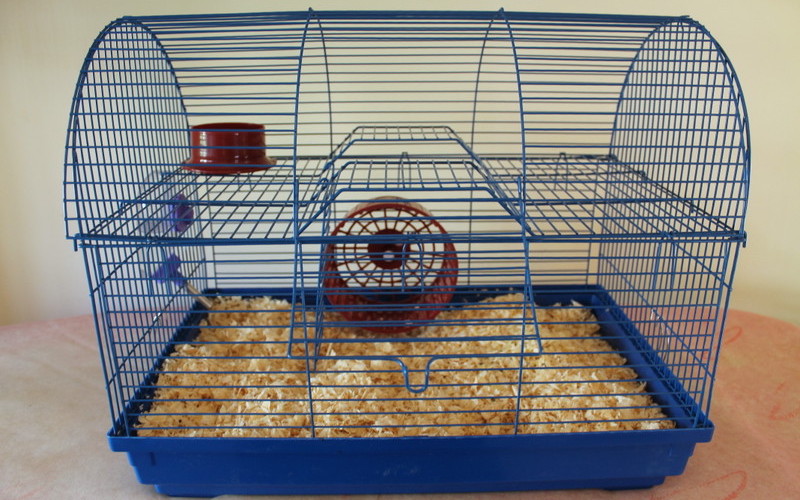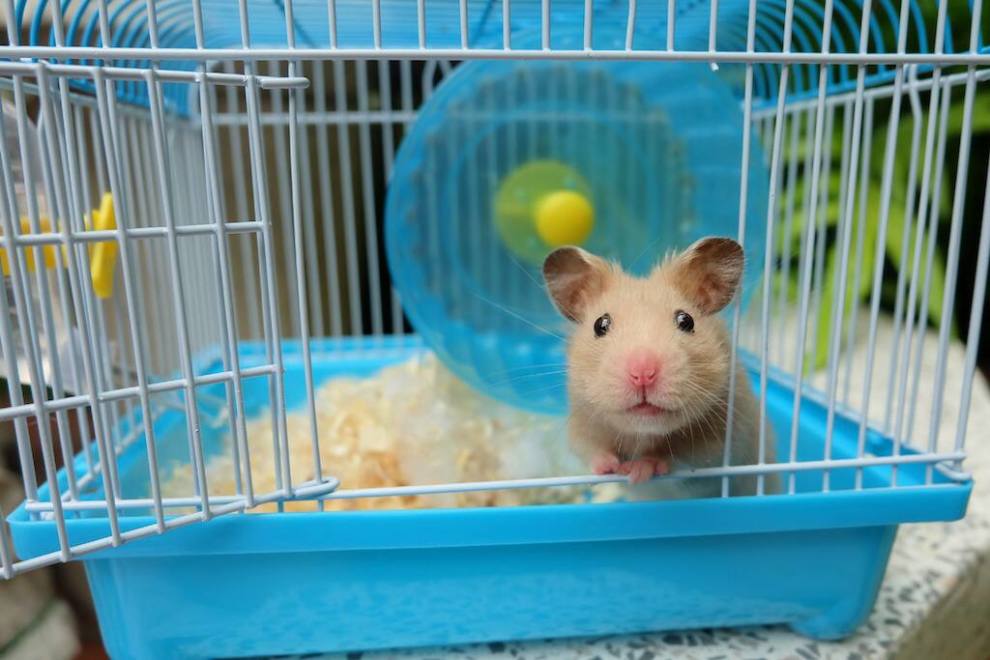How frequently should you clean your hamster’s cage? It might be difficult to judge whether or not the cage needs cleaning, and you may find yourself putting it off.
We set out to discover the proper cleaning frequency recommended by hamster specialists, and we now have some answers.
Every week or so, thoroughly clean your hamster’s cage. Longer intervals between cleanings are possible with a large cage.
You should ideally inspect your hamster’s cage on a daily basis. This entails removing wet and soiled litter, as well as any uneaten fresh food, from the cage and replacing the soiled litter with fresh litter.
Cleaning a hamster’s cage is a process that must be done thoroughly and on a regular basis; cleaning the cage too frequently or insufficiently can create stress or disease in your hamster.
Continue reading to find out what your cleaning regimen should consist of and how frequently you should do it.
So how often should I clean the hamster’s cage?

Cleaning the hamster’s cage once a week is ideal. Sometimes, it’s every two weeks or so. If you have more than one hamster in the same cage, you won’t be able to leave the cage for more than two weeks.
To put it another way, there is far more than one hamster peeing, pooping, and leaving food behind.
This is a list of the actions that contribute to an untidy cage. So, if you have more hamsters in a cage, you need to clean them more often.
As long as you don’t damage the hamster, there are various shortcuts you can use, which I’ll explain in this article.
Before we go into what makes a hamster’s cage untidy, let’s examine it in depth.
How Long Can You Go Without Cleaning A Hamster Cage?
Usually, you can leave a cage for a week or two before it needs a full cleaning, but if you do spot cleaning every day, you might be able to put this off a little longer.
We can give some general rules, but it will depend on the owner and the situation.
In reality, the size of your cage will determine how long you can go without cleaning it.
Your hamster has plenty of room to do its business in a bigger cage, while a smaller cage will smell much faster.
The most important thing is to make sure your hamster has a clean, safe place to live.
Hamsters that live in dirty places can get stressed and are much more likely to get infections that can kill them.
Spot cleaning is a great way to keep the mess under control and should be done often.
With the right cage, you can clean the whole thing twice a month.
Hamsters don’t have great eyesight, so they use their great sense of smell to get around.
Hamsters have spots on their hips that look like strange, greasy black spots. These are their scent glands, which are also called flank glands or hip spots.
At first, many hamster owners think that these glands are scabs, but they are just a normal part of a hamster’s body.
Hamsters mark their territory by rubbing these glands on rocks and other things as they move around.
They are usually bigger and more noticeable in males because they are used to attract females.
Most of the time, these glands give off a musky smell, which some owners may not like but is perfectly normal.
So make sure you know how a scent gland smells and how a cage smells when it needs to be cleaned.
Because they can’t see well and are very territorial, you should always leave a little bit of old bedding in the cage, even after a full clean.
You can do this easily by putting aside a handful of the dry, clean substrate that you took out of the cage and mixing it with the new bedding after you put it back in.
This way, the cage will be clean, but your hamster will still know it’s home.
If you clean the cage with something that kills germs and give it all new bedding, your hamster will think it has moved to a new, strange, and possibly dangerous home.
This doesn’t mean you should let the enclosure get dirty on its own, though.
Spot cleaning is a great way to keep your rodent friend’s cage clean without upsetting it.
It’s easy to do; all you have to do is take out any dirty bits of substrate and old food every day.
But make sure to check all parts of the cage carefully because hamsters tend to hide food.
This is a normal thing for hamsters to do, so try to leave a little bit behind so you don’t upset it.
Since hamsters are small enough to be eaten, they don’t usually poop in the open.
They will instead find a more private, hidden place to do their business.
So you have to look at every part of the enclosure to see if there are any dirty spots.
What Happens If You Don’t Clean Your Hamsters Cage?
Most hamsters are clean animals. You’ve probably seen your own pet clean himself or herself very hard on a regular basis.
So, a dirty cage is actually bad for your pet’s health and makes it more likely to get sick or infected.
One of the worst things about hamsters is that they don’t show any signs of being sick until it’s almost too late.
This is a natural way for many species of prey animals to act.
Any sign of weakness can make them easy prey for animals that want to eat them.
If you know your hamster well, there are some subtle signs you can look out for that could mean it needs medical help.
Some of the diseases that can be caused by a dirty place are:
Wet Tail
This is a pretty common illness that is thought to be caused by stress.
The first signs to look out for are looking “unkempt” and scruffy and having diarrhea that smells bad.
Your hamster might also stop drinking water, which can dehydrate it quickly.
If you think your pet hamster has a wet tail, you must call a vet right away because it will kill the hamster.
Upper Respiratory Infection
Hamsters are very sensitive to moisture in their environment, which makes it easy for them to get respiratory illnesses.
Some of the signs are sneezing watery eyes or nose, and trouble breathing.
How to clean a hamster cage

Just like with any other pet, you should keep your hamster’s home clean to keep it healthy and happy.
This includes doing maintenance every day, every week, and every month to keep everything in good shape. A good cleaning routine for a hamster’s home will include the following steps:
- Every day, take out the dirty bedding. Hamsters usually only pee in one or two spots in their cage, so every day, take out any wet bedding and put in new bedding. This job can be made easier with a small animal scoop.
- Every day, clean the water and food bowls. Like us, your pet would like clean dishes. Clean containers are a must if you want to keep your pet healthy and reduce the chance that their food and water will be contaminated.
- Change bedding every week. Plan to change all of your hamster’s bedding once a week, in addition to scooping out the dirty bedding every day. This also means taking away any food your hamster may have stored over the week.
- Once a month, you should clean the whole habitat. At least once a month, you should clean your hamster’s home in a deep and thorough way. While you do a deep clean, put your hamster in a safe, temporary home, like a critter carrier.
This means getting rid of all the trash and washing the habitat, hiding places, accessories, and hard toys with lukewarm, soapy water, and being careful to avoid any ammonia-based products that could be harmful.
You can use a specialized habitat cleaning spray to make sure you’re washing your pet’s things with something safe.
Then, rinse the habitat well with water to get rid of any leftovers, and let it dry completely before putting in new bedding.
Final Words
Hamsters are usually pretty clean animals, and they like to live in a clean place.
This means that as the owner, you’ll have to clean. And do so quite regularly.
But here’s the key that will make it much easier.
Not much and a lot.
Daily spot cleanings really help to get rid of smells and make your pet’s space much nicer. Also, they make it possible to go longer between deep cleans.
Just don’t mistake the smell of your hamster’s cage for a sign that it needs to be cleaned.
This smell is important for your hamster’s health, but it may take you a while to notice and get used to it.
It makes the hamster’s cage feel like a home.
So, always leave behind some old bedding.






